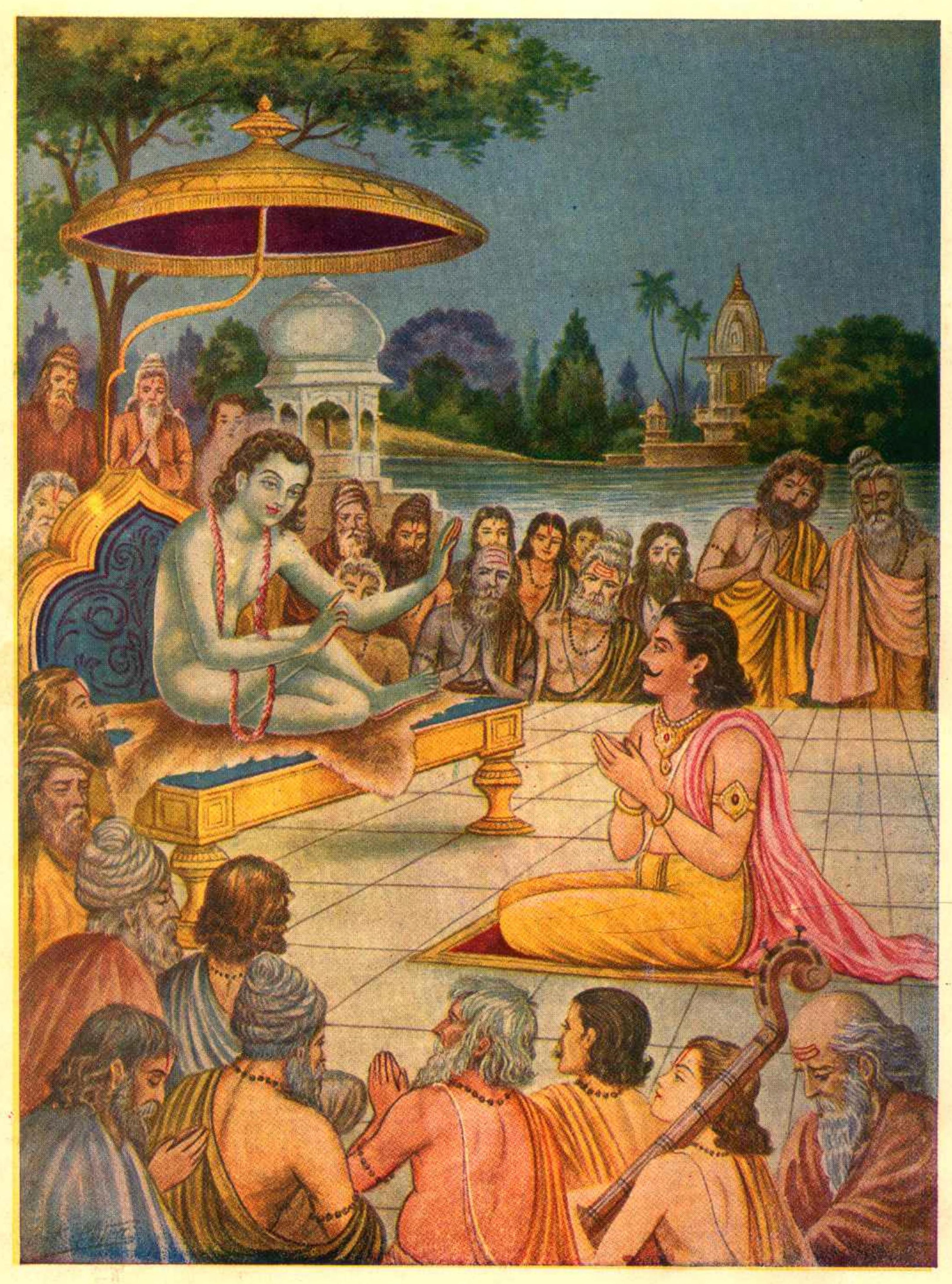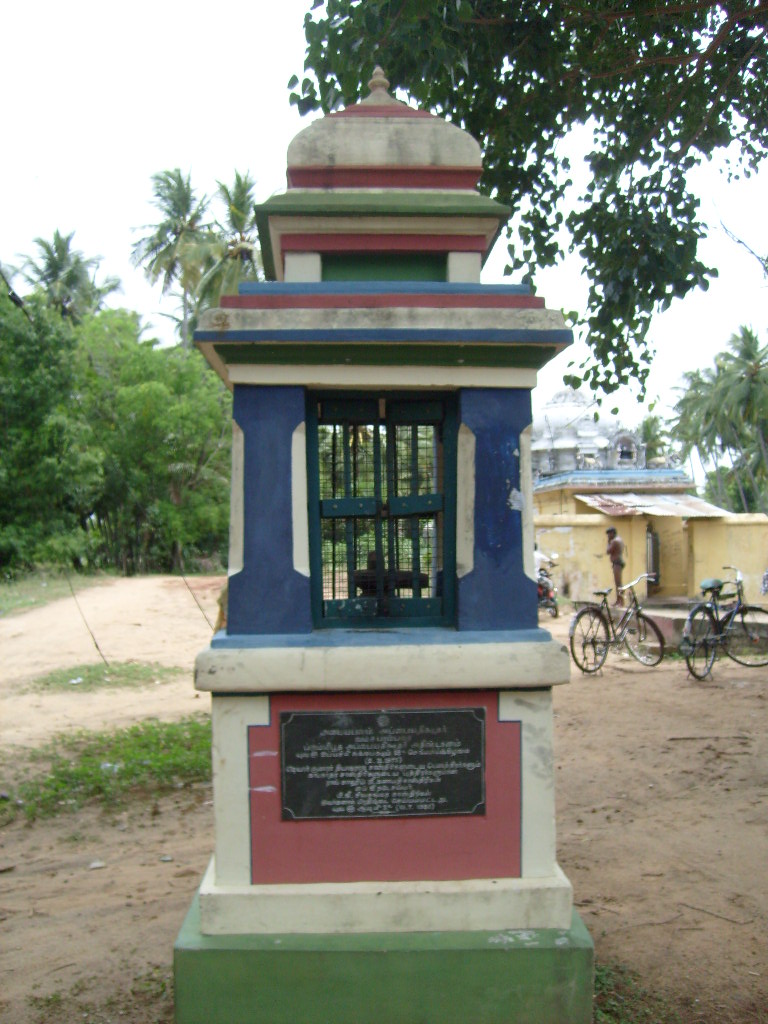|
Yadavarya
Bidarahalli Yadupati Acharya (popularly known as Yadavarya or Yadavaryaru) (also known as Yadavacharya) (c. 1580 - c. 1630) was an Indian Hindu scholar in the Dvaita Vedānta tradition. He is the follower of Uttaradi Math and the disciple of Vedesa Tirtha. Life According to hagiographies, Yadupati was born in Kannada-speaking Deshastha Brahmin family in 1580 in a village called Yekkundi which is located in Saundatti taluk of Belgaum district. His father name is Yadappayya. His cousin Bidarahalli Srinivasa Tirtha, who is also his disciple was also a Tikakara who composed many works. Works There have been many works accredited to Yadavarya, most of which are glosses, polemical tracts and commentaries. His gloss on ''Tattva Sankhyana'' of Madhva runs to 300 granthas. He also made a commentary on ''Tattvoddyota'' of Madhva. His ''Nyayasudha Tippani'', a commentary on ''Nyayasudha'' of Jayatirtha is the most important of his works. This commentary is distinctly anterior to that ... [...More Info...] [...Related Items...] OR: [Wikipedia] [Google] [Baidu] |
Vedesa Tirtha
Vedesha Tirtha ( - ) (also known as Vedesha Bhiksu also spelled Vedesha Bikshu), was an Indian Hindu scholar and theologian in the Dvaita Vedānta tradition. He was the disciple of Raghuttama Tirtha, and is the most celebrated name in the annals of the Dvaita Vedanta. He is a ''Bidi-Sanyasi'' (stray ascetic) and not pontiff of any matha (monastery). Early life Vedesa was born in 1570 CE in a pious Kannada-speaking Deshastha Brahmin family in present day North Karnataka region. He studied under the guidance of Raghuttama Tirtha and was his disciple. He wrote many commentaries on the Upanishads and other prominent works. He died in 1620 and his tomb is enshrined in Manur in present day North Karnataka, where he studied all shastras under Raghuttama Tirtha Mahaswamiji. Works Vedesha Bhiksu composed ten major works, most of them are commentaries and glosses on the works of Madhva and Jayatirtha. *''Tattvoddyota Panchika'' - a gloss on Tattvoddyota of Madhva *''Pramāṇalakṣa� ... [...More Info...] [...Related Items...] OR: [Wikipedia] [Google] [Baidu] |
Bidarahalli Srinivasa Tirtha
Bidarahalli Srinivasa Tirtha (alias ''Bidarahalli Srinivasacharya'') (c. 1600 - c. 1660) was an Indian Hindu scholar and theologian in the Dvaita Vedānta tradition. He is a prolific glossator of the early 17th century. He is the follower of Uttaradi Math and the disciple of Yadupati. According to tradition, Raghavendra Tirtha conferred on him the ascetic title of "Tirtha" by way of appreciation of his learning and contributions. Works There have been 37 works accredited to Srinivasacharya, most of which are glosses and enjoy widest popularity among the followers of Madhva, on account of their simplicity and directness of exposition. Srinivasa wrote glosses on all ten ''Prakaranas Granthas''. His work on ''Pramānalaksanam'' of Madhva known as ''Vakyarthakaumudi'' runs to 3000 granthas. His work on ''Viṣṇutattvanirṇayaṭikā'' of Jayatirtha known as ''Vakyarthadipika'' is a voluminous work and runs to 6700 granthas. His gloss on ''Karma Nirnaya'' of Madhva runs to 700 ... [...More Info...] [...Related Items...] OR: [Wikipedia] [Google] [Baidu] |
Hinduism
Hinduism () is an Hypernymy and hyponymy, umbrella term for a range of Indian religions, Indian List of religions and spiritual traditions#Indian religions, religious and spiritual traditions (Sampradaya, ''sampradaya''s) that are unified by adherence to the concept of ''dharma'', a Ṛta, cosmic order maintained by its followers through rituals and righteous living, as expounded in the Vedas. The word ''Hindu'' is an exonym, and while Hinduism has been called the oldest religion in the world, it has also been described by the modern term ''Sanātana Dharma'' () emphasizing its eternal nature. ''Vaidika Dharma'' () and ''Arya dharma'' are historical endonyms for Hinduism. Hinduism entails diverse systems of thought, marked by a range of shared Glossary of Hinduism terms, concepts that discuss God in Hinduism, theology, Hindu mythology, mythology, among other topics in Hindu texts, textual sources. Hindu texts have been classified into Śruti () and Smṛti (). The major Hin ... [...More Info...] [...Related Items...] OR: [Wikipedia] [Google] [Baidu] |
Raghavendra Tirtha
Raghavendra Tirtha (), also referred as Raghavendra Swami, (1595 – 1671) was a Vaishnava scholar, theologian, and saint. He was also known as Sudha Parimalacharya (). His diverse oeuvre include commentaries on the works of Madhva, Jayatirtha, and Vyasatirtha, interpretation of the Principal Upanishads from the standpoint of Dvaita and a treatise on Purva Mimamsa. He served as the pontiff of the matha at Kumbakonam from 1621 to 1671. Raghavendra Tirtha was also an accomplished player of the veena and he composed several songs under the name of ''Venu Gopala''. His memorial at Mantralayam attracts lakhs (hundreds of thousands) of visitors every year. Biography Raghavendra Tirtha was born as Venkatanatha in the town of Bhuvanagiri, present day in Tamil Nadu into a Kannada Madhva Brahmin family of Gautama Gotra of musicians and scholars. His great-grandfather Krishna Bhatta was a tutor to the Vijayanagara emperor Krishnadevaraya. His grandfather was Kanakachala Bhatta, and ... [...More Info...] [...Related Items...] OR: [Wikipedia] [Google] [Baidu] |
Madhva Religious Leaders
Madhvacharya (; ; 1199–1278 CE or 1238–1317 CE), also known as Purna Prajna () and Ānanda Tīrtha, was an Indian philosopher, theologian and the chief proponent of the ''Dvaita'' (dualism) school of Vedanta. Madhva called his philosophy '' Tattvavāda'' meaning "arguments from a realist viewpoint". Madhvacharya was born at Pajaka near Udupi on the west coast of Karnataka state in 13th-century India. As a teenager, he became a Sanyasi (monk) joining Brahma-sampradaya guru Achyutapreksha, of the Ekadandi order. Madhva studied the classics of Hindu philosophy, and wrote commentaries on the Principal Upanishads, the ''Bhagavad Gita'' and the Brahma Sutras ('' Prasthanatrayi''), and is credited with thirty seven works in Sanskrit. His writing style was of extreme brevity and condensed expression. His greatest work is considered to be the '' Anuvyakhyana'', a philosophical supplement to his bhasya on the Brahma Sutras composed with a poetic structure. In some of his works, h ... [...More Info...] [...Related Items...] OR: [Wikipedia] [Google] [Baidu] |
Bhagavata Purana
The ''Bhagavata Purana'' (; ), also known as the ''Srimad Bhagavatam (Śrīmad Bhāgavatam)'', ''Srimad Bhagavata Mahapurana'' () or simply ''Bhagavata (Bhāgavata)'', is one of Hinduism's eighteen major Puranas (''Mahapuranas'') and one of the most popular in Vaishnavism. Composed in Sanskrit and traditionally attributed to Veda Vyasa, it promotes '' bhakti'' (devotion) towards Krishna, an avatar of Vishnu, integrating themes from the Advaita (monism) philosophy of Adi Shankara, the Vishishtadvaita (qualified monism) of Ramanujacharya and the Dvaita (dualism) of Madhvacharya. It is widely available in almost all Indian languages. The ''Bhagavata Purana'', like other puranas, discusses a wide range of topics including cosmology, astronomy, genealogy, geography, legend, music, dance, yoga and culture. As it begins, the forces of evil have won a war between the benevolent '' devas'' (deities) and evil '' asuras'' (demons) and now rule the universe. Truth re-emerges as ... [...More Info...] [...Related Items...] OR: [Wikipedia] [Google] [Baidu] |
Anuvyakhyana
The Aṇuvyākhyāna is a Sanskrit work regarding Dvaita philosophy written by Madhvacharya. It is a metacommentary on the author's own commentary on the Brahma Sutras. The other three works on Sutras are ''Brahma Sutra Bhashya'', ''Anu Bhashya,'' and ''Nyayavivarana''. The ''Anuvyakyana'' is a work elucidating this commentary with scholarly and philosophical dissertations and criticisms of other schools especially the Advaita of Adi Shankara and the Vishistadvaita of Ramanuja. Mentions and Commentaries Commentaries *Sanyayaratnavali by Padmanabha Tirtha *Nyāya Sudhā, a magnum opus of Jayatirtha Jayatirtha (), ''also known as'' Teekacharya () (1345 – 1388), was a Hindu philosopher, dialectician, polemicist and the sixth pontiff of Madhvacharya Peetha from (1365 – 1388). He is considered to be one of the important seers in the hi ... References Bibliography * {{cite book, title = A History of the Dvaita School of Vedānta and Its Literature, Vol 1. 3rd Edition, ... [...More Info...] [...Related Items...] OR: [Wikipedia] [Google] [Baidu] |
Mīmāṃsā
''Mīmāṁsā'' (Sanskrit: मीमांसा; IAST: Mīmāṃsā) is a Sanskrit word that means "reflection" or "critical investigation" and thus refers to a tradition of contemplation which reflected on the meanings of certain Vedic texts. This tradition is also known as Pūrva-Mīmāṁsā because of its focus on the earlier (''pūrva'') Vedic texts dealing with ritual actions, and similarly as Karma-Mīmāṁsā due to its focus on ritual action (''karma'').Chris Bartley (2013), "Purva Mimamsa", in ''Encyclopaedia of Asian Philosophy'' (Editor: Oliver Leaman), Routledge, 978-0415862530, pages 443–445. It is one of six Vedic "affirming" ( āstika) schools of Hindu philosophy. This particular school is known for its philosophical theories on the nature of Dharma, based on hermeneutics of the Vedas, especially the Brāḥmanas and samhitas.Oliver Leaman (2006), Shruti, in ''Encyclopaedia of Asian Philosophy'', Routledge, , page 503. The Mīmāṃsā school was foundati ... [...More Info...] [...Related Items...] OR: [Wikipedia] [Google] [Baidu] |
Appayya Dikshita
Appayya Dikshita (IAST '), 1520–1593 CE, was a performer of yajñas as well as an expositor and practitioner of the Advaita Vedanta school of Hindu philosophy but with a focus on Shiva or Shiva Advaita. Life Appayya Dikshitar was born as Vinayaka Subramanian in Adayapalam, near Arani in the Tiruvannamalai district, in the Krishna Paksha of the Kanya month of Pramateecha Varsha under the Uttara Proushthapada constellation of the Hindu calendar. His father’s name was Rangarajadhwari. Appaya had the name Vinayaka Subramanya after the Namakarana or naming ceremony took place. Acharya Dikshitar or Acchan Dikshitar was the younger brother of Appayya. Appayya studied the Hindu scriptures under his Guru, Rama Kavi. He completed the fourteen Vidyas at his young age. Dikshitar travelled widely, entering into philosophical disputations and controversies in many centers of learning. He had the rare good fortune of being revered and patronized in his own lifetime by kings ... [...More Info...] [...Related Items...] OR: [Wikipedia] [Google] [Baidu] |
Vidyadhisha Tirtha
Vidyadhisha Tirtha (), was an Indian philosopher, scholar, theologian, saint and dialectician. He served as the sixteenth pontiff of Uttaradi Math from 1619 to 1631. He is considered to be one of the important stalwarts in the history of Dvaita school of thought on account of his sound elucidations of the works of Madhvacharya, Jayatirtha and Vyasatirtha. He is also the most celebrated pontiff of Uttaradi Math after Padmanabha Tirtha, Jayatirtha and Raghuttama Tirtha. Born into a Deshastha Brahmin family of scholars, Vidyadhisha started pursuing the knowledge of Mīmāṃsā, Vyakhyana and Vedanta at very early age. Before becoming the pontiff of Uttaradi Math, he was an accomplished scholar and logician. He composed 10 works, consisting of commentaries on the works of Madhva, Jayatirtha and Vyasatirtha and several independent treatises. His work ''Vakyartha Chandrika'' is an elaborate, complicated commentary known for its brilliance. Biography Most of the information about V ... [...More Info...] [...Related Items...] OR: [Wikipedia] [Google] [Baidu] |
Madhva
Madhvacharya (; ; 1199–1278 CE or 1238–1317 CE), also known as Purna Prajna () and Ānanda Tīrtha, was an Indian philosopher, theologian and the chief proponent of the ''Dvaita'' (dualism) school of Vedanta. Madhva called his philosophy '' Tattvavāda'' meaning "arguments from a realist viewpoint". Madhvacharya was born at Pajaka near Udupi on the west coast of Karnataka state in 13th-century India. As a teenager, he became a Sanyasi (monk) joining Brahma-sampradaya guru Achyutapreksha, of the Ekadandi order. Madhva studied the classics of Hindu philosophy, and wrote commentaries on the Principal Upanishads, the ''Bhagavad Gita'' and the Brahma Sutras ('' Prasthanatrayi''), and is credited with thirty seven works in Sanskrit. His writing style was of extreme brevity and condensed expression. His greatest work is considered to be the '' Anuvyakhyana'', a philosophical supplement to his bhasya on the Brahma Sutras composed with a poetic structure. In some of his works, h ... [...More Info...] [...Related Items...] OR: [Wikipedia] [Google] [Baidu] |



